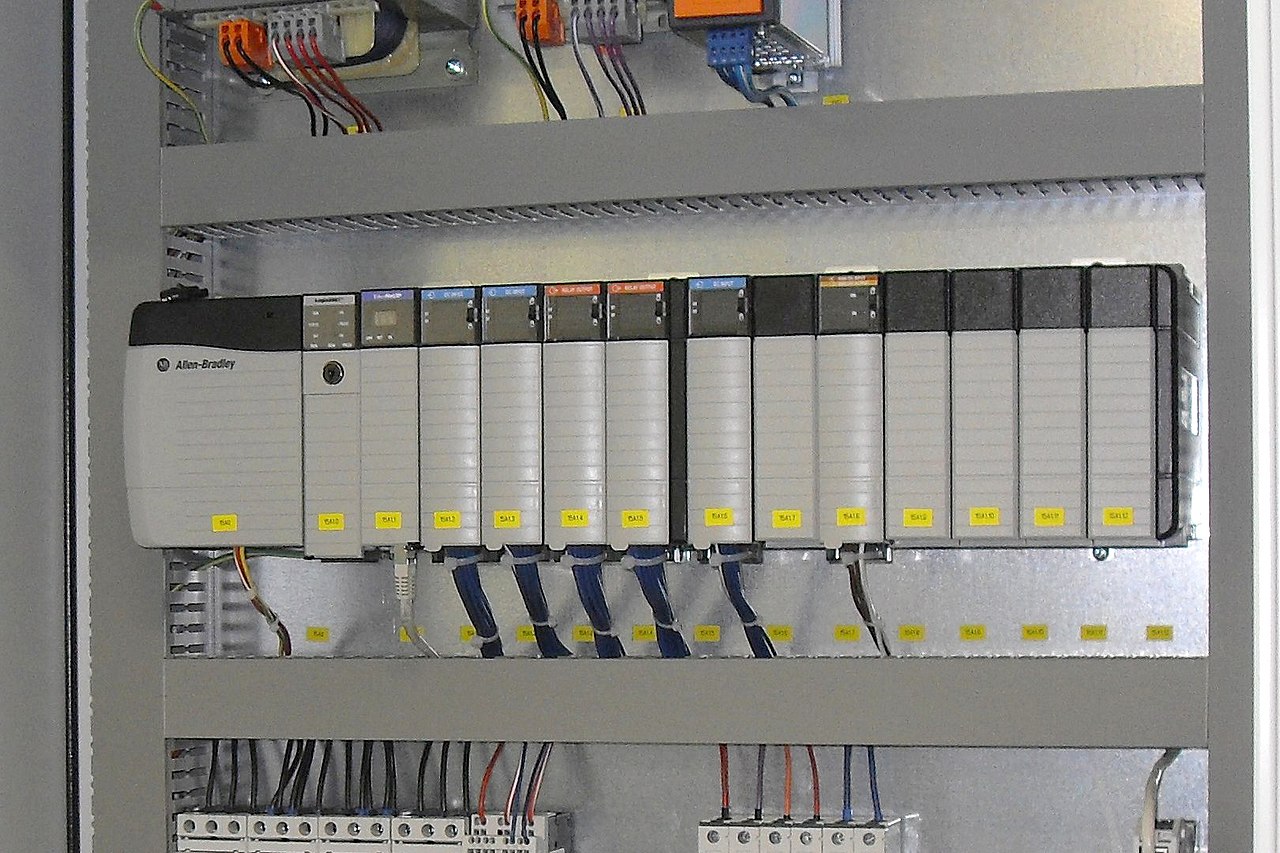Two steps can make a big difference in selecting a controller for your manufacturing system: first, make sure the manufacturer is building products for industrial automation use cases. Then look at its Electronic Design Automation (EDA).
If the OEM (factory equipment supplier) manufacturer is building for domestic industrial automation, the first thing to consider is the software platform. Since manufacturing is becoming a software-centric industry, the software platform can drive the overall process automation solution. As a manufacturer, you are just part of the environment — not an owner. This is why manufacturers need to select from a range of technologies from different OEMs.
Choosing a software platform will affect both the hardware platform and the software development ecosystem. You will also want to consider the platforms that are most suitable to your business objectives. And, with the proliferation of these platforms, many end users also need to adopt new technologies.
Regardless of the platform chosen, it is crucial to understand the value the development and software teams bring to the project. Without this understanding, integration can be an uphill battle. However, if the software and hardware teams are working together, everyone wins. Once the project is complete, look back to see what you are spending money on. Is it the developer’s development costs, or the designer’s development costs?
Which OEM Can Provide a Complete Solution?
Choosing an OEM with the capability for software development and the specific vision you need will help ensure you hit your deadlines. Some OEMs will complete a project in three or four months, while others may take 30 months.
To date, industrial organizations have tended to maintain these controllers in separate rooms or halls in a single manufacturing facility. However, an increasing number of enterprise-level systems are connecting to the internet via the world-wide-web (www). More importantly, numerous open-source tools, such as OpenOCD, have been written to interact with and support this architecture.
The Benefits of Better Automation
During the 1950s, automobile plants with hundreds of control rooms were the norm in the automotive world. Today, the control room is a thing of the past. Automated vehicles are often controlled by a handful of units, known as automated vehicle status indication (AVSI). Moreover, with the recent industry shift towards connected factory systems, systems have been brought together in one location to share the cost and operate more seamlessly as a whole.
There is an emerging opportunity for companies to put on the software expertise to make their manufacturing systems into more powerful, flexible, and agile systems. Where the companies are lacking this expertise, system integrators, vendor integrators, system builders, or engineers within a manufacturing facility are better positioned to provide the new vision of enhanced manufacturing processes. Moreover, the industrial market is embracing this change.
The industrial system market has benefited from better automation with the help of best practices from industrial software development environments. Manufacturing organizations are finding it more cost-effective to adapt to digitalization and know that fully autonomous vehicles are the way of the future. What they cannot control is the manufacturing process itself, which is vastly complex and often compared to an orchestra.
Major Players and New Players on the Edge
The industry has a lot of players in the field of industrial software. While there have been a few pioneers in the sector, the industrial software sector, major players such as PTC, Microsoft, General Electric, Siemens, Bosch, and Rockwell Automation, are dominating the industry. There are about four players who make up about 95 percent of the industrial market. These big companies have a lot of resources, and they do not need to differentiate themselves on price. Because of their market size and the fact that they have established software development tools over the years, it would be very costly for an up-and-coming player to displace them with their new offering.
There are good reasons to deploy larger PLCs for programmable logic controllers (PLCs) like these for specific subsystems where running the entire program is beneficial. For example, the programmable logic controller (PLC) must execute certain algorithms to program the I/O systems. Many CNC machine tools require a large PLC that can simultaneously run specific algorithms and execute any particular set of programs that may be needed. Once the program is specified, this platform can be used for a long time. You can’t do that with most PLCs unless they also have an I/O controller. In other words, you must wait until you need an extra operating unit to be able to save some cost, instead of not saving money in the first place. In terms of economics, some PLC vendors offer custom versions of their PLCs with additional I/O capabilities. If that’s what you want to do, make sure you get a PLC with those modules available.
There are different options for various sizes of the logic controller, with the standard, multi-function industrial controllers. The choice of which type of controller you need will be governed by your specific requirements, which you can think of as a “matching the customer to the program” exercise. For example, if the program needs to support a filter or an analog voltage source, the choice between a digital and an analog PLC controller could be one of those questions. Other factors to be considered are the required monitoring/reporting capability, the number of inputs available for all the controllers you are using, and the connection types.
PLCs for More Complex Applications
At the other extreme, some components are designed to operate in extreme temperatures and need to be custom engineered for conditions in a power plant or other plant environment. For example, some controllers need to support the differential voltage of a turbocharged engine and would not be suitable for systems that run in a constant AC load.
Another consideration when selecting a controller is whether to install the controller in a specific programmable logic controller (PLC) on-site, off-site, or both.
An on-site or dedicated system removes the need for frequent programming changes, maintenance, or other interruptions to the equipment. It also removes the high cost of installation for users with limited available staff.
An on-site system could be used only for when there are no other controls nearby. An off-site system can be set up and controlled remotely with minimal installation at the facility.
Defining Types of I/O
Begin by defining the types of I/O by including the types of inputs and outputs you expect. For instance, if you want to control the gate voltage, you may include the following types of devices:
- Inductive I/O (Optional)
- Radiofrequency (RF) (Optional)
- Thermal control (optional)
With inductive I/O, the control system must have a path from a control signal to the input of the inductive device. Once you’ve defined the input types, add an offset where the inductive I/O must be grounded.
Thermal control devices use the I/O pins to control the voltage of the terminal controlling the device. If you include thermal devices, the I/O pins must be grounded at the device’s base. If you don’t include thermal devices, you can use a grounded 3.3v voltage divider and use the pinouts below for convenience.
RF devices use the I/O pins to control the voltage of the terminal controlling the device. With RF and thermal devices, the I/O pins must be grounded at the device’s base. If you don’t include thermal devices, you can use a grounded 3.3v voltage divider and use the pinouts below for convenience.
Typically, you must have at least one VGA port and one controller for control. If you require more ports, either VGA or controller ports must be connected in parallel (or series), depending on your device.
For RF and thermal devices, the I/O pins must be grounded at the device’s base. If you don’t include thermal devices, you can use a grounded 3.3v voltage divider and use the pinouts below for convenience.
Communication Requirements
Additionally, all of these systems have their operating systems, programs, and utilities. They often have different terminal software on PCs and controllers. When multiple PLCs are connected, for example, a PC may have a separate utility to communicate with the controller. More frequent use of more complex controls on a larger product line also may require an increased number of standard interfaces.
Also, the complexity of the cost of all of these interfaces and programming them often justifies an updated controller. It’s a costly exercise to upgrade an existing controller for modern communication capabilities. Thus, since controllers typically last five to seven years and are the single most expensive part of an industrial control system, controllers typically should be upgraded when communications capabilities require an upgrade. Once communication capabilities necessitate an upgrade, it’s essential to address all of the PLC and controller-related issues.
Hardware Requirements
The more data the controller is to process, the more DRAM memory needs to be in the system to store it. If more than one device is supported by the system, the associated need for the corresponding memory requirements can change, even if a memory specification was for only one device.
The scan-time speed of the target device is another key parameter and requires a framework to track all scan-time rates and limits for each device, but the actual time to perform any given scan must be optimized. This includes polling for data.
Portion sizes and interface connections also become very important, especially when using large-type and fast serial interfaces. All connections, no matter how small or large, should be designed for ease of reuse. For example, memory connections should not connect to the controller in any way, shape, or form. The data is also less likely to corrupt the controller after it is connected.
As you can see, with the growing demand and the wide range of applications needed enables you to optimize not only system memory capacity, but system capacity as well. This makes it possible to add more RAM to your system, while not adversely affecting the performance of other processes that require the same amount of RAM, such as virtualization. You also get to change the type of controller at any time, adding a larger capacity one or a smaller capacity one. You can even add more controller ports to increase the number of drives that can be linked in parallel. Even a bad controller can be replaced easily.
Software Requirements
Look carefully at all programming functions required. Some of these are expressed in the IEEE Standard. PIC controllers are particularly good candidates for PIC 16-bit processors for logic, I2C, and interrupts. Although PIC has limited capabilities for real-time logic processing, PICs can do some essential real-time processing using little or no memory. The PIC can support both asynchronous and synchronous FPGA logic, so its logic capabilities allow it to perform higher-level synthesis and advanced timing analysis.
Power is another consideration. For some applications, the advanced power-management capability in Field Programmable Gate Array (FPGA) is desirable. FPGAs use less power than the motherboard-based microprocessors used in many automotive applications. However, the power requirements of an FPGA are very low in relation to the function it performs. Any serious programmer will appreciate the compact size of an FPGA and the fact that the extra power consumption can be used for other higher-priority uses.
The analog tools mentioned above are important for any serious real-time FPGA programmer. An alternative real-time analog model is the THT-2560 Universal Digital Analog (UDAN) board, which provides digital analog, synchronous and asynchronous I2C, and both digital and analog I/O. It also can operate on a single 5V input and 2.7V, 3.3V, or 5V DC input.
Finally, the range of software tooling that may be available to interface with your host system is almost as vast as the microcontroller community itself. It can seem daunting to first consider the different devices and other types of controllers that might be a part of your system and to figure out which tooling may make the task of interfacing with the hardware easier.
EngNet, the parent company of IndustryTap.com, provides consulting services and introductions to leading designers and manufacturers of PLC systems.







